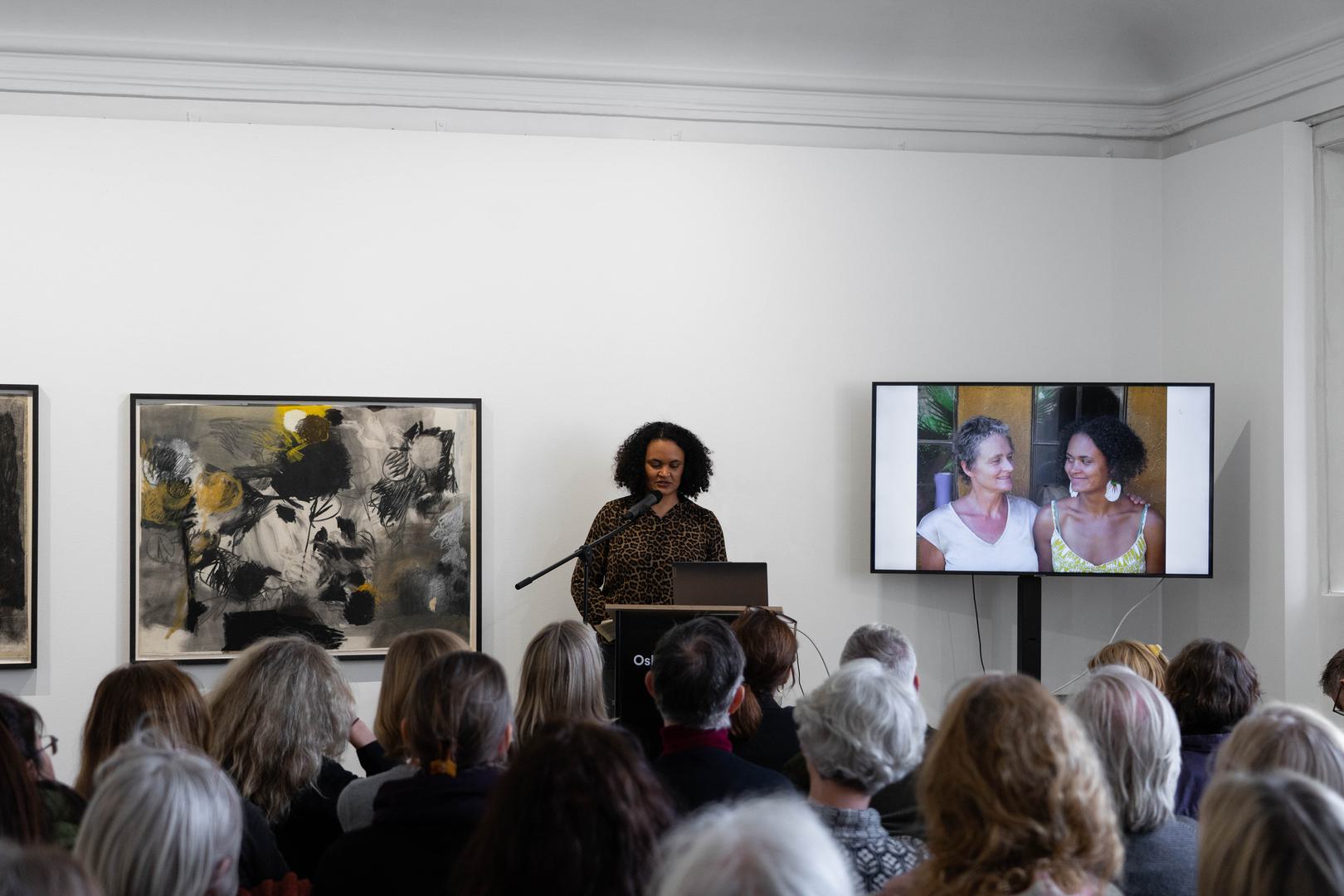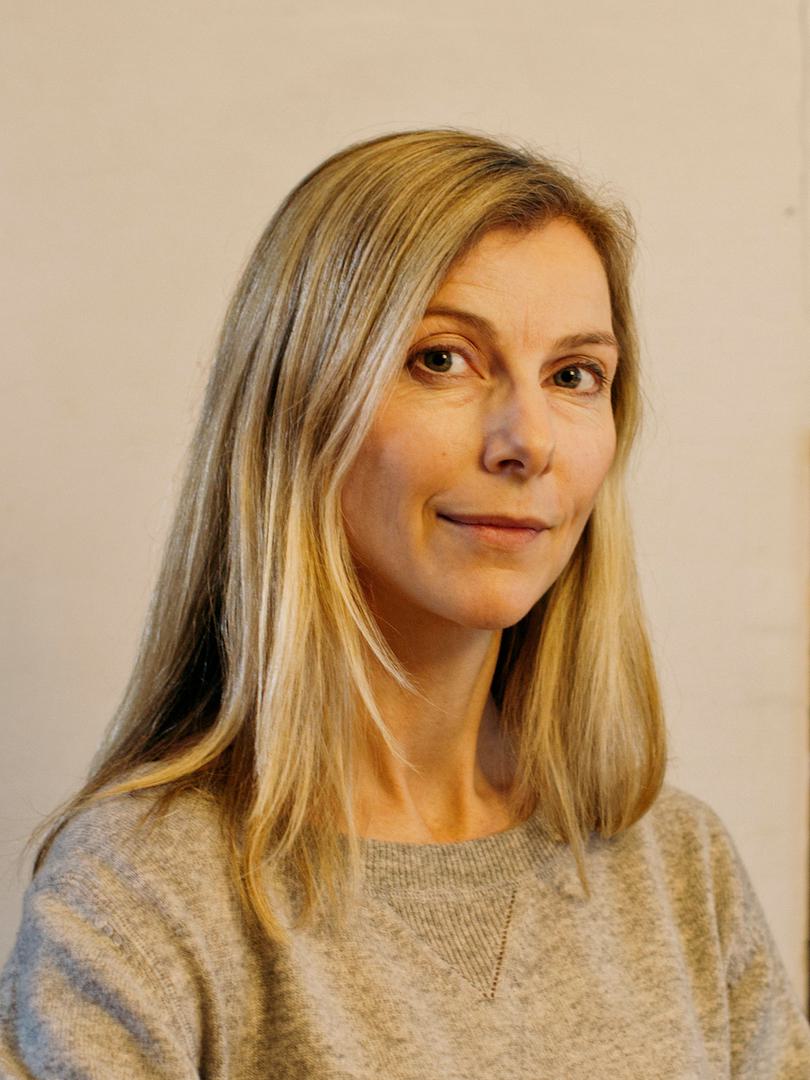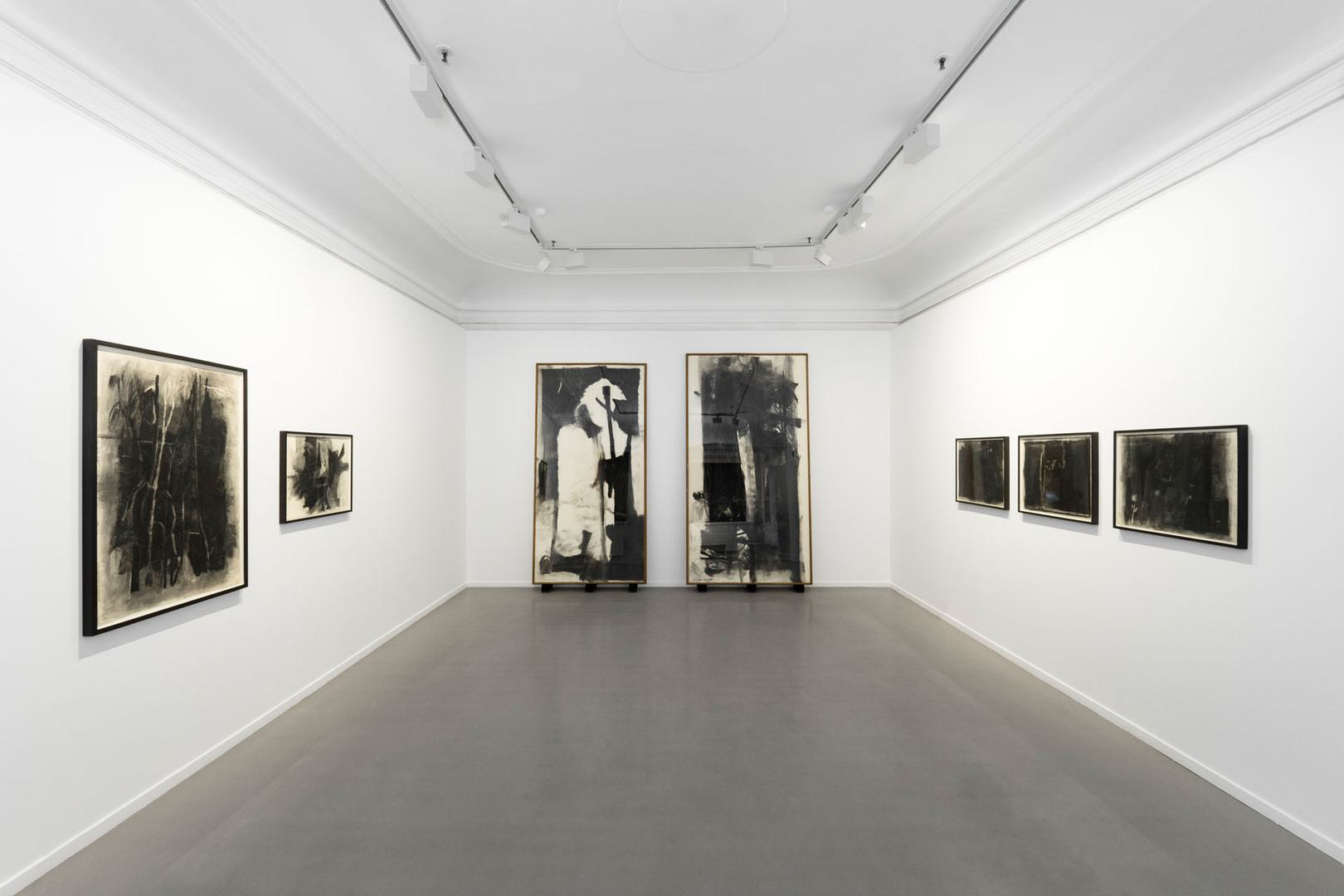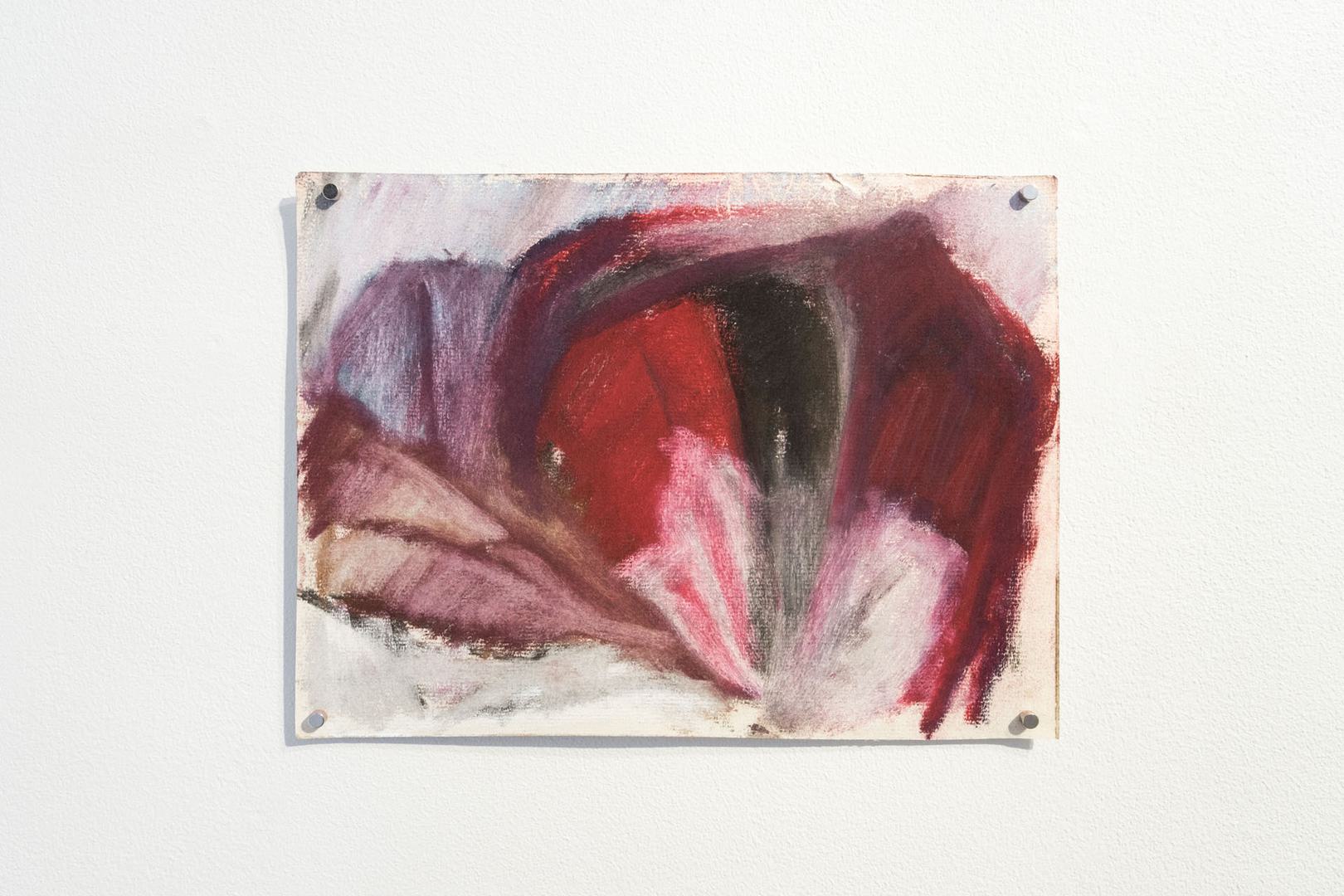Aase Gulbrandsen
Til minnet
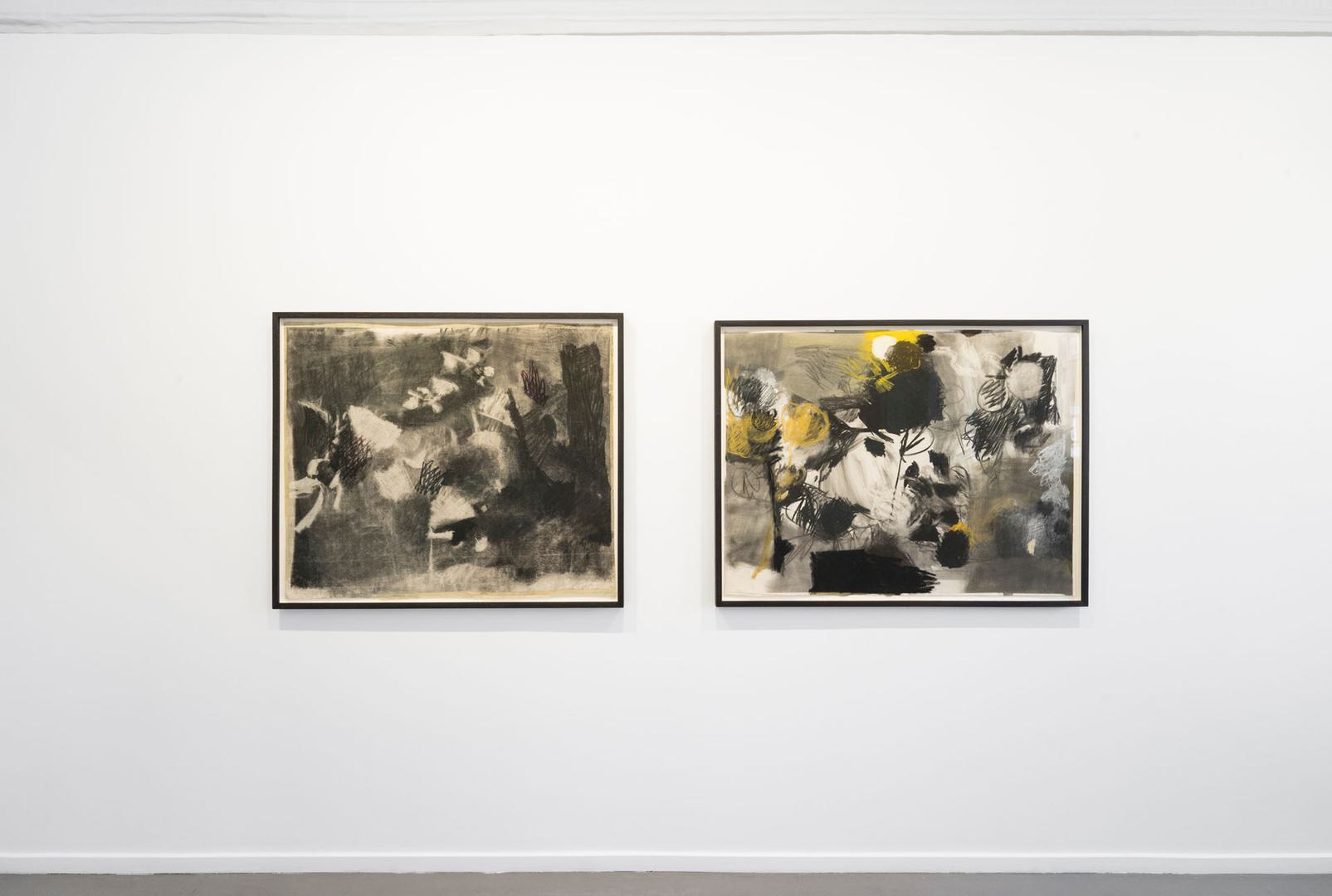
Aase Gulbrandsen, Til minnet, 2024. Photo: Jacky Jaan Yuan Kuo
In the series Tilbakeblikk [Hindsight] we examine our own institutional history by reconsidering both past exhibitions and artists who have exhibited at Oslo Kunstforening.
Til minnet [To Memory] focuses on the work of Aase Gulbrandsen (1927-2020). In 1974, Gulbrandsen exhibited at Oslo Kunstforening, in a breakthrough show that primarily showcased her charcoal works. Fifty years later, we present an exhibition that also revolves around Gulbrandsen’s significant body of work in charcoal, but also includes pastels and documentation materials never before shown, exploring various aspects of Gulbrandsen's ouevre.
The exhibition is curated by Marit Paasche, Kristine Jærn Pilgaard and Andrea Moen, in dialogue with Oslo Kunstforening. The curators have worked with the archival materials on behalf of Aase Gulbrandsens Stiftelse.
Til minnet is supported by The Bergesen Foundation, Arts and Culture Norway, Aase Gulbrandsens Stiftelse, and The Fritt Ord Foundation.

Aase Gulbrandsen, Til minnet, 2024. Photo: Jacky Jaan Yuan Kuo
Aase Gulbrandsen
Til minnet
Aase Gulbrandsen’s distinctive talent was quickly recognized, and soon to be confirmed through her first solo exhibition of charcoal drawings at Oslo Kunstforening in 1974, which was well received. Now, fifty years later, we can review her charcoal work from a different angle.
Aase Gulbrandsen (1927–2020) made her debut in Kunstnerforbundet in 1970, and although her formal training was limited to a life drawing class at Bjarne Engebret’s Art School, Gulbrandsen’s method was intuitive and process-oriented. She would work on certain pieces for several consecutive years, pushing herself to explore and investigate the materials even further. Her personal archive abounds with post-it notes, memos, and messages that she kept for the sake of recollection. Among her packed-up artworks several carry a note that says “til minnet” [to memory].
Aase Gulbrandsen remained active as an artist almost right until she died at age 92. This raises the question of what will happen with all that she left behind. What is the best way to sort and categorize her art; what is most crucial to preserve? From the curator’s or art historian’s point of view, it is most common to divide the work into different periods or phases, as well as according to media.
This is also what we have attempted, albeit somewhat reluctantly, seeing that such principles of organization do not necessarily do justice to Gulbrandsen’s entire oeuvre. Yet the size of her archive demands some tough choices. She spent an incredible amount of hours producing and documenting this work, and here you will find both “blood, coal, and tears” (in her own words) and a solid dose of daredevilry.
The word corpus (body) often comes up in discussions of art, as in a body of work. This makes sense, given how individual artworks tend to be part of a greater corporeal whole, each relating to and building upon one another. But the ways in which such artistic corpora “move” or “express” themselves can be difficult to grasp and interpret for anyone besides the creator. For those standing outside it takes time. Then again, it is strikingly beautiful when we discover subtle shifts in how lines, surfaces, colors or materials are handled.
Starting from the simple message, “til minnet”, the curators have zoomed in on several charcoal series, in addition to a selection of pastels and small paintings, all dating from the 1960s and 70s. They have emphasized Aase Gulbrandsen’s practice of drawing, showing how light and charcoal darkness can emerge, with great intensity and force, from both big and small formats. Spaces emerge and collapse and, as if by magic, the artist manages to simplify and abstract, her methods seemingly minute and intuitive. The resulting expression is free and organic, but also very conscious of form.
The title of the exhibition, “Til minnet”, refers both to Aase Gulbrandsen’s life-long conversations with her own recollections and to the art that she left behind, for the benefit of memory, in a greater, collective perspective.
– Marit Paasche, Kristine Jærn Pilgaard and Andrea Moen

Aase Gulbrandsen, Til minnet, 2024. Photo: Jacky Jaan Yuan Kuo
Bio
Aase Gulbrandsen became an active part of the art scene in Oslo at the age of 43. She referred to herself as a draftsman and a painter, and exhibited at places such as UKS, Kunstnernes Hus, Oslo Kunstforening, Bergen Kunstforening, Tegnerforbundet, and Kunstnerforbundet.
Aase Gulbrandsen began her artistry with pastel, watercolour, charcoal and painting in small formats in the 1960s. In the 1970s, she mainly immersed herself in work with large charcoal drawings in the 1970s. Later, from the 1990s, she also worked with painting in large formats in. In 1977, she received the State’s Guarantee Income. Gulbrandsen had a studio in the City Hall in Oslo from 1991-1996, and later got a studio at the old industry area at Frysja, where she worked until her death in 2020.
Aase Gulbrandsen also created art works for public buildings. The first was commissioned for the Norwegian Police Academy in Oslo in 1979, and the last for Gol high school in 2001. She has been purchased by, among others, the National Museum, Oslo municipality, Kode, Nordnorsk Kunstmuseum (she worked a lot in Lofoten), Le Fonds National d’Art Contemporain, Statoil and Telenor.
Gulbrandsen left behind an extensive and impressive archive with an abundance of works, sketches and documentation material of different kinds. She also bequeathed the funds that would become the The Aase Gulbrandsen Foundation. The foundation was established in 2021 and initiated a review of the archive material from the artist, revealing the number of striking individual works and series Gulbrandsen had left behind, many of which had never have been shown to the public.
The Aase Gulbrandsen Foundation was established in 2021, and consists of Tina Skouen (Chair), Karin Hellandsjø, Marit Paasche og Birgitte Sigmundstad.
